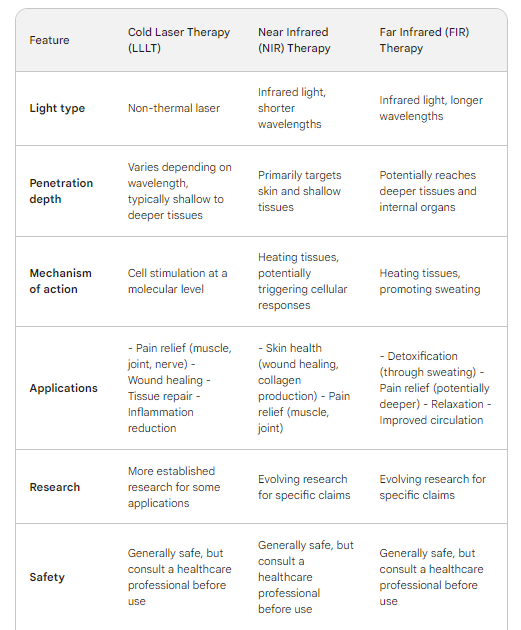Near Infrared Therapy and Far Infrared Therapy (source: Perplexity AI && Gemini) offer distinct benefits due to their different heating mechanisms. Near infrared systems focus on improving the skin’s surface, raising core body temperature, enhancing circulation, and providing pain relief. They are effective for rejuvenating the skin and offering topical relief for skin issues and mild pain. On the other hand, Far Infrared Therapy heats the body internally, leading to profuse sweating that aids in detoxification, metabolism increase, weight loss, stress reduction, and stimulating blood flow deeply to reduce inflammation and enhance muscle recovery. While both therapies can detoxify the body, they achieve it through different processes; near infrared systems provide topical relief, while far infrared units promote toxin release through sweating. Ultimately, the choice between Near Infrared Therapy and Far Infrared Therapy depends on individual health goals and preferences.
Wavelength:
-
NIR: Possesses shorter wavelengths (0.8-1.5 micrometers) compared to FIR.
-
FIR: Has longer wavelengths (5.6-1000 micrometers) than NIR.
Penetration Depth:
-
NIR: Penetrates less deeply, primarily targeting the skin and shallow tissues.
-
FIR: Penetrates deeper, reaching deeper tissues and potentially even some internal organs.
Applications:
-
NIR: Often used for:
-
Skin health: Wound healing, collagen production, and reducing inflammation.
-
Pain relief: Particularly for muscle and joint pain.
-
FIR: Often used for:
-
Detoxification: Sweating to release toxins.
-
Relaxation: Improving circulation and muscle relaxation.
-
Pain relief: Similar to NIR, but potentially for deeper-seated pain.
 . Now for the latter there are other fields ;).
. Now for the latter there are other fields ;).

